Europe Packing List: The Ultimate Guide
Pack the right clothing and toiletries with our essential Europe packing list. Learn what to take for your adventure.
Finally, going on that trip to Europe? Whether you’re exploring the historic streets of Rome, hiking the picturesque Alps, or enjoying the vibrant nightlife of Berlin, a good Europe packing list is critical to a smooth and enjoyable trip.
In this guide, we’ll walk you through everything you need to pack for your European adventure, from choosing the perfect backpack to essential gear and helpful tips.


 +1M
+1M
With Holafly, you save +30% compared to roaming fees
Plans that may interest you
Getting Airplane Ready for Your Europe Trip
Flights from the USA to Europe are not short, so smart packing for your flight can help you be comfortable. Therefore, it’s essential that you are comfortable because you can expect to spend at least 12 hours in that clothing.
Also, planning what you put in your carry-on and what gets checked in can make or break your flight experience. Here are some packing tips for your Europe trip:
Airplane packing tips
- Airplanes have air conditioning. It’s very likely that you will get a bit chilly during the light, even if you’re traveling during summer. While you can probably get cover from the flight attendant, pack a big scarf to use as a light cover. Also, a pair of socks can come in very handy.
- For winter travel, try picking jackets and coats that can fold well so you can store them in the overhead compartment.
- Avoid tight clothing that cuts off your blood flow. Pants are usually more comfortable than skirts and dresses.
- Cotton and natural materials are more breathable and more comfortable to wear for prolonged periods.
- Consider wearing compression socks on a long flight. You will be sitting for almost the entire trip, which can get uncomfortable.
- You need one piece of checked luggage, one carry-on bag, and one tote bag, a crossbody bag, or a fanny pack for personal items and important documents you need to have handy, especially when going through airport security.
- You need wet wipes, tissues, a scarf, a travel toothbrush, and toothpaste in a ziplock bag to be handy.
- If you take any prescription medications, they must also be nearby.
- A neck pillow can make a long flight much more comfortable.
- A small toiletry bag with things you might use to freshen up during the flight should be in your overhead carry on bag that you can easily reach.
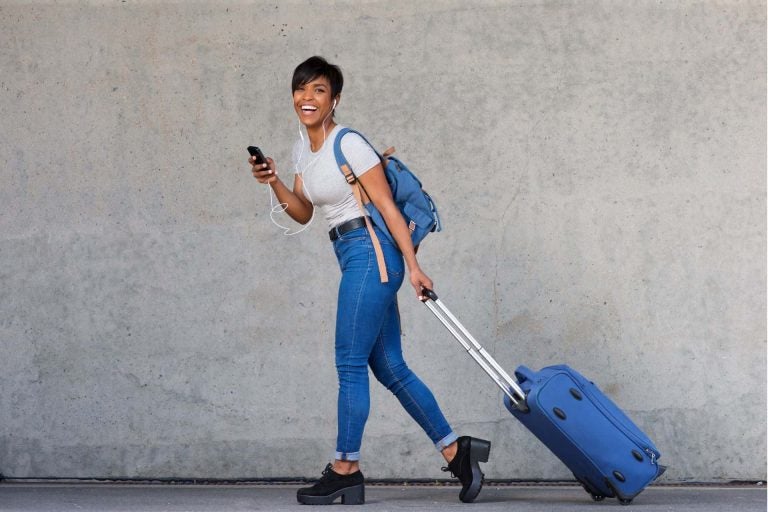
Now, let’s tackle your packing list. We’ll cover clothing and footwear, toiletries and hygiene, electronics, and other essentials.
Europe Packing List: Clothes
Even though Europe is significantly smaller than the USA, it is very diverse in climate. You will need entirely different clothes for the Mediterranean countries like Italy, Greece, and Spain than you would normally pack for Sweden, Switzerland, or Norway. On top of that, you need to think about the seasons. Your winter packing list will be much different than the summer one.
Depending on which countries you plan to visit in Europe, check the weather forecast and stay mindful of the local climate. However, there are some packing essentials that you can always fall back on.
Winter packing list for Europe
- Layered clothing, including long-sleeved shirts, sweaters, and jackets.
- You need a lighter jacket for Southern places like Sicily or southern Greece.
- Winter in warm Mediterranean countries is more rainy than snowy, so keep that in mind when choosing your jacket. Also, if you are going to be near the sea, expect lots of wind. Even though the temperature itself may not be too low, wind can make it feel colder.
- Thermal underwear is light to pack and can be extremely handy in colder weather. Even your light jacket can work with it.
- Gloves, hats, and scarves are essential for European winters.
- For Alpine climates, especially if you plan hiking in the snow, you’ll need an excellent winter jacket (think Jack Wolfskin), fleece jackets, and waterproof pants.
- You’ll need waterproof shoes and hiking boots if that’s your favorite activity.
- A collapsible umbrella will come in handy for sure.

Summer packing list for Europe
- In places like Norway, summer temperatures range between 64 F and 77 F. Expect the nights to be even chillier. Long sleeves for the evenings and better footwear than sandals are recommended.
- However, the situation is entirely different in Greece, Croatia, and Italy. Expect hot, hot summers, and bring breathable linen and cotton clothing.
- Warmer places require sandals, flip-flops, and comfortable shoes, like sneakers, for longer hikes.
- Remember to wear sunglasses, hats, and other accessories that will protect you from hot, sunny days.
- Swimwear is essential for beach trips.
Note: If religious sites are on your itinerary, check if there is a dress code for visiting them. Some Churches expect women to cover their shoulders and hair, and they cannot enter if they wear pants.

Footwear Packing List
Comfortable footwear is essential for exploring Europe’s cobblestone streets and hiking trails. For outdoor adventures, you’ll need some walking shoes or hiking boots, and for urban exploration, you can bring along sneakers or sandals.
Your walking shoes should be broken before your trip. You don’t want to deal with blisters while exploring Europe. When choosing what footwear to pack, think about the activities you are planning first and style later.
Best footwear for Europe:
| Activity | Appropriate Footwear |
| City Sightseeing | Comfortable walking shoes or sneakers are ideal for exploring cities like Paris, London, and Berlin. Choose lightweight, supportive shoes with good cushioning for long days of walking. |
| Hiking and Outdoor | Invest in sturdy hiking boots with ankle support and soles with a good grip for hiking and outdoor activities in Europe’s scenic landscapes. Use waterproof boots to dry your feet in wet conditions and rugged terrain. |
| Beach Relaxation | Sandals or flip-flops are perfect for relaxing on beaches like Bordeira, Amio or Cala Granadella. Choose waterproof options with comfortable straps and non-slip soles for sandy shores and seaside strolls. |
| Winter Adventures | Insulated winter boots with traction soles are essential for staying warm and safe in snowy or icy conditions. Look for boots with waterproof materials, insulation, and grip to navigate snowy streets and alpine terrain. |
| Casual Explorations | Casual sneakers or loafers are the most comfortable walking shoes for daily roaming through European cities. Choose breathable materials and supportive designs for comfort during leisurely walks, museum visits, and casual outings. |
| Outdoor Sports | For outdoor sports such as cycling, running, or tennis, select specialized athletic shoes designed for your activity of choice. Look for cushioning, stability, and traction to enhance performance and prevent injuries. |
| Nightlife and Dancing | Comfortable yet stylish shoes are essential for enjoying Europe’s vibrant nightlife and dancing scenes. Opt for fashionable footwear with cushioned insoles and support to keep your feet happy on the dance floor all night long. It’s better to leave those high heels at home. They will not do you any good on the cobblestone streets of European cities. |
Documentation
There are some documents that you have to pack to make sure your trip goes without problems. It takes a bit of preparation, but it is necessary to have all you need.
Passport – You need a valid passport. Check if you need a visa for the countries you are about to visit. In many cases, US citizens can stay in EU countries for 90 days without a special visa. Remember, though, that not all European countries are part of the EU, and they might have different legislation.
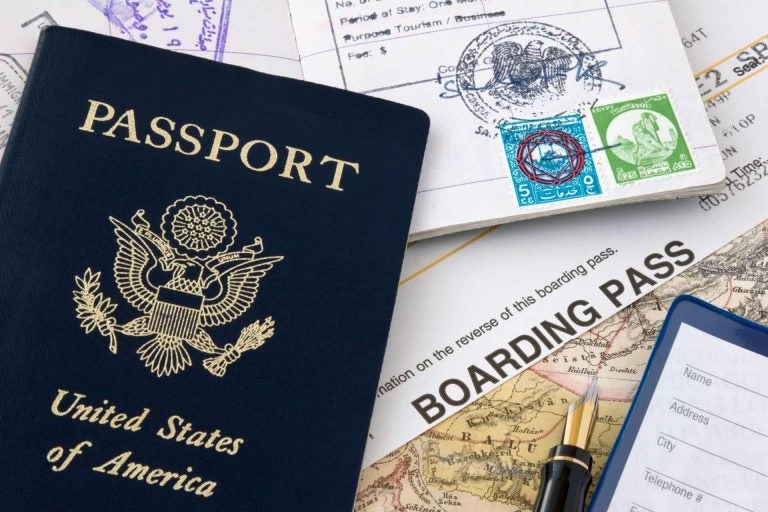
Travel Insurance – It is essential that you have travel insurance for the duration of your stay in Europe. You can easily buy that online. Print it out and have it with you.
Plane tickets – Whether you have them on your phone or printed out, ensure you can always have them ready when needed.
Accommodation reservations – Same like your plane tickets. It’s best to have them both in print and digital format. You want them to be accessible even if your phone battery dies.
It is a good idea to make photocopies of your passport and travel documents and keep those copies in your hotel room. Even if you lose your documents or fall victim to pickpocketers, you can still make the entire process of retrieving your documents if you can show copies to the authorities.
Hygiene and Toiletries
Toiletries are handy for long hauls, when you have long flights, during layovers, during train travels, and even when you’re out camping in the beautiful Swiss Alps. This is what you should have in your toiletry bag.
- Shampoo
- Conditioner
- Body wash
- Antiperspirant
- Toothpaste and toothbrush
- Travel towel
- Nail clippers
- Insect repellent
- Wet wipes
- Sun protection
Most hotels and Airbnbs in Europe will provide toiletries for your stay, but you may still want to bring your own if you are using a special brand or want to ensure you have all you need.
Hydration
Bring a reusable water bottle to stay hydrated throughout the day and reduce plastic waste. This is especially important during outdoor activities and in warmer weather. You will notice that you usually don’t get free water refills in many European restaurants and cafes and are charged for bottled water. This is especially the case in Western Europe. In the East and South, you can ask for tap water, and you will most likely get a glass.
The good news is that tap water is drinkable in most European places, so you can easily refill your water bottle.
See the recommended amount of water you should drink daily, depending on what you plan to do in Europe:
- City Sightseeing: Drink 8–10 ounces of water every 1–2 hours.
- Hiking and Outdoor Adventures: Consume 16–32 ounces of water per hour.
- Beach Relaxation: Aim for 8–10 ounces of water every hour.
- Formal Occasions: Stay hydrated with at least 64–80 ounces of water daily.
- Winter Adventures: Drink 8–10 ounces of water per hour.
- Casual Explorations: Hydrate with 8–10 ounces of water every 1–2 hours.
- Outdoor Sports: Aim for 16–32 ounces of water per hour of exercise.
- Nightlife and Dancing: Drink 8–10 ounces of water for every alcoholic beverage.
Electronics Essentials
When you travel, you must keep your smartphone and other devices charged, but outlets in different countries may vary in size and form, and the voltage might differ from what you are used to in the US. Even the chargers for iPhones are different!
It goes without saying that you need to bring your phone with you. That’s where you can store your plane tickets, hotel reservations, take photos, and use it stay connected with your loved ones.
Consider taking the following electronics to keep your battery going, and if you travel Europe with iPhone, make sure you bring a proper adapter to regulate the voltage and protect your devices.
Portable power bank—Keep your devices charged on the go with a portable charger. It’s ideal for long days of sightseeing or outdoor adventures where access to power outlets may be limited.
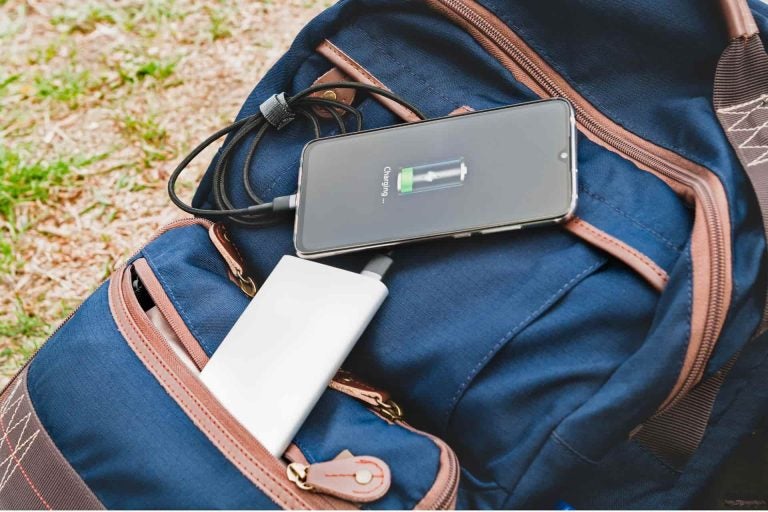
Universal power adapter—US appliances are designed to work on 110 volts, while EU appliances are 220 volts. Today, most phones, laptops, and other electronic gadgets can work on both of these power grids. To check, look at the mark saying (110 – 220). US plugs have two flat prongs, while EU plugs have two round prongs. The UK and Ireland have three rectangular prongs. You need a universal adapter with an in that US prongs can fit and an out that fits the European outlets. There are inexpensive and readily available online or even at the airports.
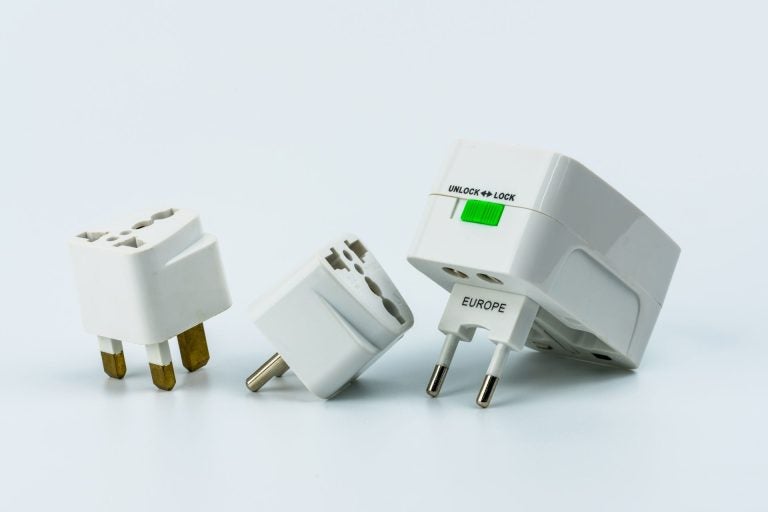
Chargers and charging cables—You need your chargers and cables for your electronics to work. However, these are easy to forget. Take this as a reminder to pack them first. Keep them in your tote bag wherever you go, as your phone will need charging during the day. During your flight, make sure they are in your carry on bag.
Headphones—Noise-cancelling headphones are ideal for traveling. They can do more for you than just allow you to enjoy your in-flight entertainment. They can also protect you from other noisy travelers or give you some peace and quiet when you need them. Remember to take some good headphones with you even if you pack light.
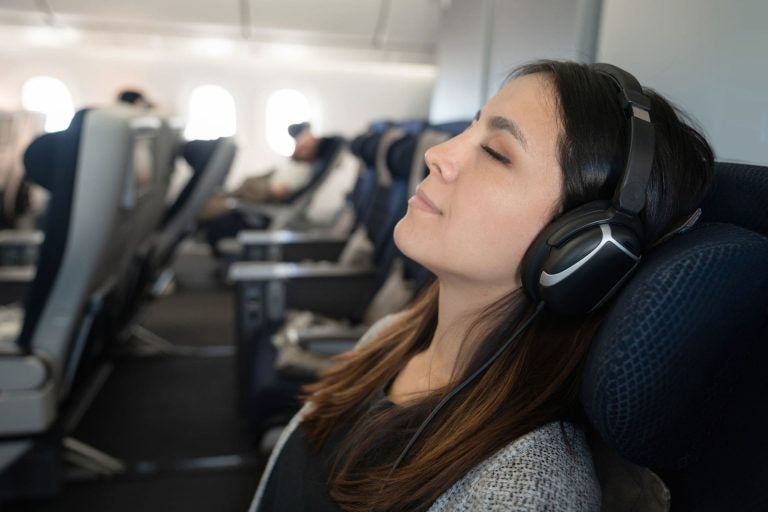
Communication and Connectivity
You should enjoy Europe first-hand and definitely cut down your screen time while on your trip, but this doesn’t mean that you should not stay connected. Having a secure internet connection during your Europe trip is important. Here are just some of the things you can do if you can stay connected at all times:
- Access your reservation confirmations in a second.
- Have your travel tickets nearby at all times.
- Make restaurant reservations.
- Order food at your Airbnb.
- Listen to free online tour guides and apps
- Buy public transportation tickets
- Check public transportation schedules
Not to mention, you may want to continue using WhatsApp or Facetime or share photos on your social media.
You will most likely have free WiFi in your hotel and at the airport. Otherwise, you are left at the mercy of your mobile phone data plan. These data roaming charges can get quite expensive, and if you don’t want to get hit with an unexpected bill when you get home, your best option is to use an eSIM.
What’s an eSIM for Europe, and where can you get one?
eSIM is a digital SIM card that you can easily buy online and install within seconds by scanning a QR code. Once installed and activated, it can connect to the internet without using your primary SIM card data. It doesn’t mess with your primary SIM; you still get to keep your WhatsApp number.

You can get your eSIM for Europe in just a few steps:
- Check if you have an eSIM-compatible phone. These days, most of the phones are.
- With Holafly, you can choose from plans for individual countries or for all of Europe. It doesn’t matter whether you’re already in Europe or need an eSIM for Europe from Australia.
- Read the installation and activation instructions from your eSIM provider.
- Install your Holafly eSIM for Europe and enjoy unlimited data.
With an eSIM, like Holaflys, you’ll receive:
- Unlimited data and 1 GB daily tethering for multiple devices
- Plans that you can customize for any number of days
- Connect as soon as you land
- Avoid roaming charges
- Get a 4G/5G connected
- 24/7 customer service
- With a single Global eSIM package, you can get connected in more than 110 destinations.
Final Packing Tips for Your Trip to Europe
If this is your first time packing for Europe, it can be daunting, but with these helpful tips, you’ll be prepared for any adventure.
Consider the Time of the Year
Europe experiences distinct seasons, so consider the weather and climate of your destination when packing. Check average temperatures and weather forecasts to pack appropriate clothing and gear for your trip.
We’ve crunched down the average weather conditions throughout Europe below so you can get an idea of what to expect and pack for your backpacking getaway.
1. Spring (March to May):
- Milder temperatures and occasional rain showers.
- Average temperatures range from 10°C to 20°C (50°F to 68°F).
2. Summer (June to August):
- Warm to hot temperatures, abundant sunshine, and minimal rainfall.
- Average temperatures range from 20°C to 30°C (68°F to 86°F).
3. Fall (September to November):
- Cooler temperatures and rain.
- Initial average temperatures range from 10°C to 20°C (50°F to 68°F), cooling down to 5°C to 15°C (41°F to 59°F) by November.
4. Winter (December to February):
- Varies widely by region, with cold temperatures, snowfall, and icy conditions in Northern and Eastern Europe.
- Average temperatures range from below freezing to 10°C (14°F to 50°F) in Northern Europe and 5°C to 15°C (41°F to 59°F) in Southern Europe.
Consider the Destination You Are Traveling To
When traveling throughout Europe, always check your destination’s cultural norms. Even though some countries may be very close to each other, their cultures might be very much different. Europe is diverse, so don’t hesitate to read up on your destination, just in case.
Regardless, if you’re exploring historic landmarks, enjoying outdoor adventures, or indulging in the local gastronomy, you need to keep in mind these things when packing.
- Local weather and seasonal conditions
- Will I spend more time indoors or outdoors?
- Are there cultural restrictions or traditions regarding clothing?
- Is there easy access to food and water in rural areas just as urban?
- Be ready for sudden changes in the weather
- Always have ID, visas, and permits
Use Packing Cubes
Packing cubes are a great way to save space and compartmentalize your luggage. They help you pack similar items together, so it’s ten times easier to find what you’re looking for without making a mess in your suitcase. If you are a numbers person, this is an excellent way to think about how much space you need for different things:
- Clothing: 40%
- Gear and Equipment: 20%
- Toiletries: 15%
- Electronics: 10%
- Other: 15%
Summary
Packing for a European adventure can seem like a lot, but with careful planning and the right essentials, you’ll have smooth travels. Your comfort is important, so you need appropriate clothing, footwear, and documents wherever you go. You want to spend your time strolling through historic cities, hiking scenic trails, or relaxing on beautiful beaches, worry-free.
Remember to be mindful of the local climate, cultural norms, and planned activities. Packing cubes can help you organize your luggage.
One of the best things you can do is consider an eSIM for seamless connectivity. With a Holafly eSIM for Europe, you get unlimited data for the precise number of days you stay in Europe. From the moment you land on EU soil, to the moment you are back onboard your returning flight – you’ll have internet connectivity.
FAQ about Europe Packing List
This packing guideline should help you pack light but still have everything you need on your trip. The rule suggests that you pack five tops, four bottoms, three accessories, two pairs of shoes, and one swimsuit. Coordinating the colors and materials carefully can give you everything you need for a trip.
For a 7-week European trip, pack 5-7 versatile tops, 2-3 long-sleeve shirts, 2 lightweight sweaters, and 7 bottoms (jeans, pants, shorts, skirts). Depending on the season, you might need a lightweight and heavier jacket, plus a raincoat. Bring 2-3 pairs of shoes (walking shoes, nicer shoes, sandals). Focus on layering and plan for laundry.
Packing for a 3-month trip to Europe requires careful planning and organization. Pack lightweight, versatile clothing, plan to do laundry regularly, and prioritize essential items like toiletries, electronics, and communication tools for staying connected.
This depends on the month, as well as on the part of Europe you are visiting. Summer in Greece is very different from winter in Norway. For a month in Europe, pack 5 versatile tops, 2-3 long-sleeve shirts, 1 lightweight sweater, and 2-3 pants (jeans, trousers). Add 2 pairs of shorts or skirts, 1 pair of comfortable leggings, and 1 swimsuit. Bring 1 lightweight jacket and a raincoat, but this depends greatly on the time of your visit and which part of Europe you’re visiting. For shoes, pack 1 pair of comfortable walking shoes, 1 pair of nicer shoes, and 1 pair of sandals.





 Language
Language 


















 No results found
No results found













